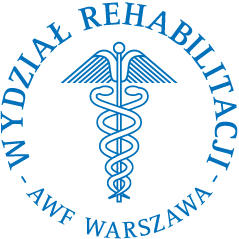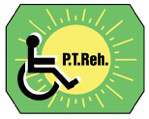


|
Current issue
Archive
Manuscripts accepted
About the journal
Editorial board
Reviewers
Abstracting and indexing
Contact
Instructions for authors
Publication charge
Ethical standards and procedures
Editorial System
Submit your Manuscript
|
1/2024
vol. 38 Original article
Investigation of the relationship between upper extremity lateralization and dual task cost in ındividuals with hemiplegic cerebral palsy1.
Gaziantep Islam Science and Technology University, Faculty of Health Sciences, Department of Physiotherapy
and Rehabilitation, Gaziantep, Turkey
2.
Hasan Kalyoncu University, Faculty of Health Sciences, Department of Physiotherapy and Rehabilitation,
Gaziantep, Turkey
3.
Gaziantep University, Faculty of Health Sciences, Department of Physiotherapy and Rehabilitation Gaziantep,
Turkey
Advances in Rehabilitation, 2024, 38(1), 35–42
Online publish date: 2024/03/27
Article file
- Karabalut-2024_04_29.pdf
[0.44 MB]
ENW EndNote
BIB JabRef, Mendeley
RIS Papers, Reference Manager, RefWorks, Zotero
AMA
APA
Chicago
Harvard
MLA
Vancouver
1. Rosenbaum P, Paneth N, Leviton A, Goldstein M, Bax M, Damiano D, et al. A report: the definition and classification of cerebral palsy. Dev Med Child Neurol. 2006; 109: 8– 14. 2.
Sakzewski L, Ziviani J, Abbott DF, Macdonell RA, Jackson GD, Boyd RN. Randomized trial of constraint‐induced movement therapy and bimanual training on activity outcomes for children with congenital hemiplegia. Dev Med Child Neurol. 2011; 53(4): 313–20. 3.
Jaspers E, Desloovere K, Bruyninckx H, Klingels K, Molenaers G, Aertbeliën E, et al. Three-dimensional upper limb movement characteristics in children with hemiplegic cerebral palsy and typically developing children. Res Dev Disabil. 2011; 32(6): 2283–94. 4.
Francisco-Martinez C, Prado-Olivarez J, Padilla-Medina JA, Diaz-Carmona J, Perez-Pinal FJ, Barranco-Gutierrez AI, et al. Upper limb movement measurement systems for cerebral palsy: a systematic literature review. Sensors (Basel). 2021; 21(23): 7884. 5.
Steenbergen B, Gordon AM. Activity limitation in hemiplegic cerebral palsy: evidence for disorders in motor planning. Dev Med Child Neurol. 2006; 48(9): 780–3. 6.
Karabulut DG, Yumin ET. Motor imagery profiles of the children with hemiplegic cerebral palsy according to gender and affected side. Annals Med Res. 2022; 29(12): 1418–24. 7.
Ofte SH, Hugdahl K. Rightleft discrimination in male and female, young and old subjects. J Clin Exp Neuropsychol. 2002; 24(1): 82–92. 8.
Karabulut DG, Turan Mİ. Implicit motor ımagery performance in childhood recurrent headaches. Exp Appl Med Sci. 2023; 4(1): 431–41. 9.
Raimo S, Iona T, DiVita A, Boccia M, Buratin S, Ruggeri F, et al. The development of body representations in school-aged children. Appl Neuropsychol Child. 2021; 10(4): 327–39. 10.
Williams J, Reid SM, Reddihough DS, Anderson V. Motor imagery ability in children with congenital hemiplegia: effect of lesion side and functional level. Res Dev Disabil. 2011; 32(2): 740–48. 11.
Kosslyn SM, Digirolamo GJ, Thompson WL, Alpert NM. Mental rotation of objects versus hands: Neural mechanisms revealed by positron emission tomography. Psychophysiol. 1998; 35(2): 151–61. 12.
Souto DO, Cruz TK, Fontes PL, Haase VG. Motor imagery in children with unilateral cerebral palsy: a case–control study. Dev Med Child Neurol. 2020; 62(12): 1396–1405. 13.
Steenbergen B, Craje C, Nilsen DM, Gordon AM. Motor imagery training in hemiplegic cerebral palsy: a potentially useful therapeutic tool for rehabilitation. Dev Med Child Neurol. 2009; 51(9): 690–96. 14.
Crajé C, VanElk M, Beeren M, VanSchie HT, Bekkering H, Steenbergen B. Compromised motor planning and motor imagery in right hemiparetic cerebral palsy. Res Dev Disabil. 2010; 31(6): 1313–22. 15.
Mutsaarts M, Steenbergen B, Bekkering H. Impaired motor imagery in right hemiparetic cerebral palsy. Neuropsychologia. 2007; 45(4): 853–9. 16.
Steenbergen B, Nimwegen VM, Crajé C. Solving a mental rotation task in congenital hemiparesis: Motor imagery versus visual imagery. Neuropsychologia. 2007; 45(14): 3324–8. 17.
Plummer P, Eskes G. Measuring treatment effects on dual-task performance: a framework for research and clinical practice. Front Hum Neurosci. 2015; 9: 225. 18.
McIsaac TL, Lamberg EM, Muratori LM. Building a framework for a dual task taxonomy. BioMed Res Int. 2015; 2015: 591475. 19.
Luder B, Kiss R, Granacher U. Single and dual-task balance training are equally effective in youth. Front Psychol. 2018; 6(9): 912. 20.
Alyahya EA, Dawes H, Smith L, Dennis A, Howells K, Cockburn J. Cognitive motor interference while walking: a systematic review and meta-analysis. Neurosci Biobehav Rev. 2011; 35(3): 715–28. 21.
Surkar SM, Hoffman RM, Harbourne R, Kurz MJ. Cognitive-motor interference heightens the prefrontal cortical activation and deteriorates the task performance in children with hemiplegic cerebral palsy. Arch Phys Med Rehabil. 2021; 102(2): 225–32. 22.
Tramontano M, Morone G, Curcio A, Temperoni G, Medici A, Morelli D et al. Maintaining gait stability during dual walking task: effects of age and neurological disorders. Eur J Phys Rehabil Med. 2017; 53(1): 7–13. 23.
Sumnima K, Reddy J. Cognitive function deficits in cerebral palsy: a comprehensive review. Int J Curr Res. 2013; 5: 2931–3. 24.
Schaefer S. The ecological approach to cognitive-motor dual-tasking: findings on the effects of expertise and age. Front Psychol. 2014; 14(5): 1167. 25.
Zielinski IM, Jongsma ML, Baas CM, Aarts P, Steenbergen B. Unravelling developmental disregard in children with unilateral cerebral palsy by measuring event-related potentials during a simple and complex task. BMC Neurol. 2014; 14: 6. 26.
Hung YC, Meredith GS. Influence of dual task constraints on gait performance and bimanual coordination during walking in children with unilateral cerebral palsy. Res Dev Disabil. 2014; 35(4): 755–60. 27.
Leurer MK, Rotem H, Meyer S. Effect of concurrent cognitive tasks on temporo- spatial parameters of gait among children with cerebral palsy and typically developed controls. Dev Neurorehabil. 2014; 17(6): 363–7. 28.
Günel MK, Mutlu A, Tarsuslu T, Livanelioglu A. Relationship among the Manual Ability Classification System (MACS), the Gross Motor Function Classification System (GMFCS), and the functional status (WeeFIM) in children with spastic cerebral palsy. Eur J Pediatr. 2019; 168(4): 477–85. 29.
Hidecker MJC, Paneth N, Rosenbaum PL, Kent RD, Lillie J, Eulenberg JB et al. Developing and validating the communication function classification system for individuals with cerebral palsy. Dev Med Child Neurol. 2011; 53(8): 704–10. 30.
Moura R, Andrade PMO, Fontes PLB, Ferreira FO, Salvador LS, Carvalho MRS et al. Mini-mental state exam for children (MMC) in children with hemiplegic cerebral palsy. Dement Neuropsychol. 2017; 11(3): 287–96. 31.
Kurt M, Savaş D, Şimşek TT, Yiş U. The psychometric properties of Turkish version of the Modified Paediatric Mini Mental Scale. Child Care Health Dev. 2023; 49(3): 572–8. 32.
Sánchez MS, Rueda MF, Florencio LL, Tejada CM, Gómez CA. Reliability and agreement of the Nine Hole Peg Test in patients with unilateral spastic cerebral palsy. Eur J Pediatr. 2022; 181(6): 2283–90. 33.
Xu K, Wang L, Mai J, He L. Efficacy of constraint-induced movement therapy and electrical stimulation on hand function of children with hemiplegic cerebral palsy: a controlled clinical trial. Disabil Rehabil. 2012; 34: 337–46. 34.
Parsons LM, Fox PT. The neural basis of implicit movements used in recognising hand shape. Cogn Neuropsychol. 1988; 15(6-8): 583–61. 35.
Piitulainen H, Rantalainen T, Kulmala JP, Mäenpää H. Gait complexity quantified using inertial measurement units in children with cerebral palsy. Gait Posture. 2018; 65(1): 305–6. 36.
Okur EO, Arik MI, Okur I, Gökpınar HH, Günel MK. Dual-task training effect on gait parameters in children with spastic diplegic cerebral palsy: Preliminary results of a self-controlled study. Gait Posture. 2022; 94: 45–50. 37.
Reilly DS, Woollacott MH, Donkelaar PV, Saavedra S. The interaction between executive attention and postural control in dual-task conditions: children with cerebral palsy. Phys Med Rehabil. 2008; 89(5): 834–42. 38.
Chiu HC, Ada L. Constraint-induced movement therapy improves upper limb activity and participation in hemiplegic cerebral palsy: a systematic review. J Physiother. 2016; 62(3): 130–7.
This is an Open Access journal, all articles are distributed under the terms of the Creative Commons Attribution-NonCommercial-ShareAlike 4.0 International (CC BY-NC-SA 4.0). License (http://creativecommons.org/licenses/by-nc-sa/4.0/), allowing third parties to copy and redistribute the material in any medium or format and to remix, transform, and build upon the material, provided the original work is properly cited and states its license.
|
    |